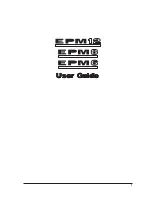
Power requirements
Lorelei draws up to 55mA on the
+
12V rail, and 54mA on the -12V rail.
It does not use the 5V rail.
Inputs and outputs
Lorelei's input and output jack sockets are illuminated, lighting red for positive voltage and blue
for negative voltage. (Audio appears purple, since it is a rapid alternation of positive and
negative.)
Inputs with attenuators are indicated by a dotted line linking the socket to its corresponding
attenuator knob.
From top to bottom, Lorelei's sockets are:
–
Pitch CV input (1V/octave)
–
Linear FM input
–
Exponential FM input, with attenuator
–
Cross-modulation/sync input
–
Wave shape CV input, with attenuator
–
Square/pulse output
–
Sine/pseudo-triangle output
–
Cosine/pseudo-saw output
Controls
In addition to the three attenuators, there is an eight-position octave selection switch (white), a
Tune control (blue), and a Shape control (green).
The Tune knob will adjust the oscillator pitch by approximately one octave up or down.
Wave shapes
The wave shape CV input and knob together simultaneously control the waveforms of Lorelei's
three outputs.
A curious result of the exact nature of the wave shaping applied is that at the half-way point the
perceived pitch of the sine and cosine outputs doubles.
Below are oscilloscope traces showing the three outputs as the Shape knob moves from 0 to 10.


























